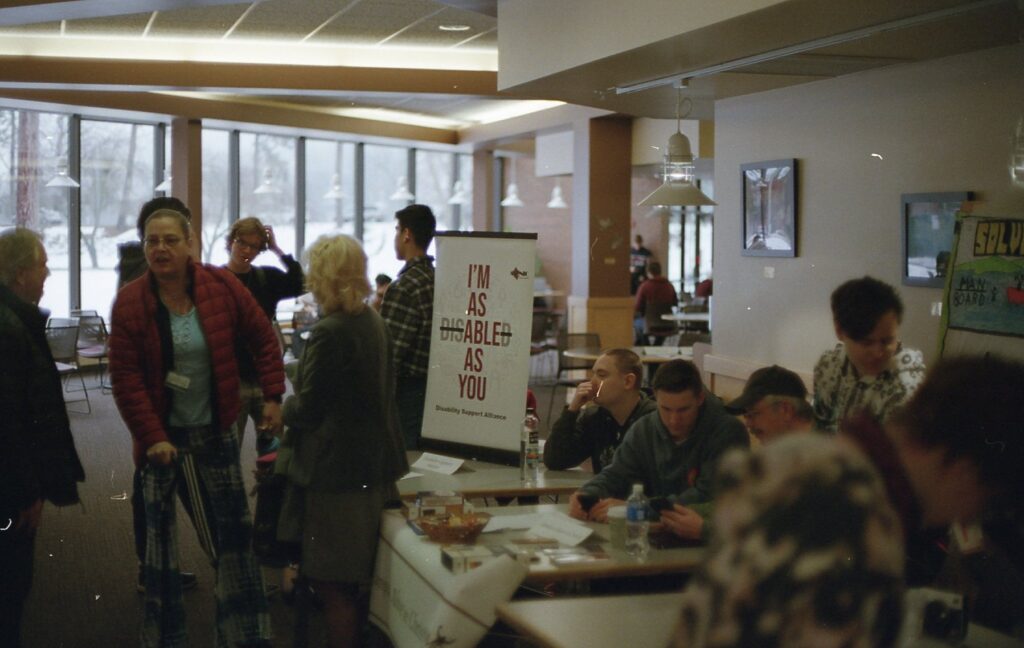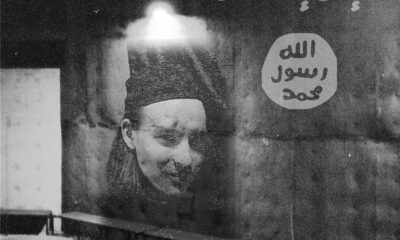Community
Former Glory: The Fall & Rise of NIC Clubs
It’s Tuesday at NIC, and students have gathered for a noon meeting of the LDSSA in Boswell Hall. A well-dressed, middle-aged man stumbles in at five-past-twelve, carrying pizza boxes. He blames his tardiness on the Costco food court as students rise from their seats in slow and orderly fashion to claim slices of pizza, and return while talking amongst themselves.
They begin their meeting by singing a hymn, and move onto a guided discussion of the Book of Mormon concerning the importance of family.
As the discussion closes and club time ends, students slowly file out at their leisure. It’s clear nobody minds hearing what their sharp-dressed mentor has to say, even sticking around long after scheduled club time to speak with him.
His name is Seth King, and he’s a volunteer from the community- though not a member of school faculty, he helps oversee the club.
The Latter-Day Saints Students’ Association club has existed at NIC since 2013, said King, 45, who’s been a part of the club since then. When asked how it has changed over the last several years, he noted one particular thing: it’s shrunk.

“It kind of feels like we’re all re-establishing what it means to be a club at NIC.”
Seth King, LDSSA Volunteer Community Advisor
King regaled a past where the club felt a stronger presence at NIC:
“It used to be that we’d have a beach clean-up, we did service projects, we had a food drive,” he said.
“I don’t know if it’s because of changes in leadership at [Associated Students of NIC] or because of COVID, but it kind of feels like we’re all re-establishing what it means to be a club at NIC.”
King said that after COVID, everything changed for their club. And it hasn’t gone back.
“There used to be a little bit more togetherness in that way,” he said.
At the Sentinel‘s Publication Club, membership has also seen a decline over the years. An October 2014 edition of the Sentinel newspaper listed 23 members. Today, we are a staff of five. We no longer publish a newspaper and since 2017, have instead published a semesterly magazine.
Chronic staff shortages reduce the amount of content generated for the Sentinel, leading to less-than-interesting content populating some of the magazines that have been published, like a two-page how-to article on backing up files onto Blu-Ray. If only it could read itself, it might cure insomnia.

The Photography Club meets in Boswell Hall on Fridays at 11 a.m., and on some Fridays, the photo classroom will be found devoid of life.
The 26th of January, a lone club member sat in Room 148. He said that he shows up just in case others do, but they often don’t. If you’re interested in photography, you can brighten their day by showing up.
So why have clubs lost members? There’s no simple answer, but there’s some clues.
Enrollment
Over the last decade, NIC’s enrollment has been on a downward trend. According to the NIC Board Books, enrollment for the fiscal year of 2024 (FY24) was placed at 4,634. The same graph shows enrollment at 7,830 in the fiscal year of 2014 (FY14).
Current ASNIC president Michael Habermann explained that one major result of lower enrollment is lower budgets for ASNIC and, as a result, clubs. ASNIC and the clubs it oversees are funded through student fees. The less students paying fees, the lower the budget. Financial restraints may prevent clubs from hosting the events they wish to.
Outreach
If you’re a club on the hunt for prospective members, your options to reach them are limited: word of mouth, posters, and the semesterly 2-hour Club Fair.

Aside from those, clubs can attempt creating a social media presence- easier said than done, especially at a community college such as NIC. Even ASNIC’s Instagram account is lucky to get 5 likes on a post. It’s a good day at the Sentinel when an Instagram post gets 40 likes.
Word of mouth becomes harder and harder as clubs shrink, as there are simply less people to spread the word.
Outreach is possibly one of the biggest issues clubs face- students at NIC gave one of two reasons for not joining clubs: not enough time; or not knowing of any clubs that interest them. How are they to join if they don’t know of any clubs? How are clubs to inform those students that they exist?

Schedules
For many students, attending club meetings simply isn’t feasible due to scheduling conflicts. Many clubs schedule their meetings at midday when students are on campus, though a number of classes run straight through 11 a.m. to 12 p.m. or 12 p.m. to 1 p.m.

COVID
Despite being nearly half a decade since COVID-19 swept across the globe, its effects linger.
“When I first started [in 2021], it was right near the end of COVID. That’s when we didn’t allow clubs to meet,” said Matt Huylar, Coordinator of Student Involvement. He oversees ASNIC and student clubs. “And it was tough to get people showing up to student events, to get them to reach out to club advisors, to try and join.”
“I have seen an uptick this year, on number of clubs and students asking to do events,” Huylar said. “I just think we’re kind of on a rebound.”

“I think we’re just kind of on a rebound.”
Matt Huylar, Coordinator of Student Involvement
A Reminder
It’s important to keep in mind how unique NIC is. Despite being a community college, NIC has dorms, competitive athletic programs, and over two dozen clubs. For many students attending NIC they aren’t looking for the “college experience” and joining a club isn’t on their mind, according to Huylar.
“NIC is a little special,” said Huylar, “because we have dorms, a rec center, we’re on the lake, it’s kind of a destination community college.”
Outlook
While this article has presented a downward trend, there is no reason to think that clubs are dying at NIC.
The recent January 24th Board meeting brought some good news courtesy of Dr. Nick Swayne, NIC President:
“First-time degree-seeking students are up, wait for it,” Dr. Swayne said, “19.2%.” Applause followed. Effectively, this is the first semester in a decade NIC has seen an enrollment increase.
Improved class scheduling will be coming Fall semester of this year, according to Kathleen Miller-Green, Chair of Faculty Assembly, at the Jan. 24th Board meeting.
The change will put all NIC classes on a universal timetable to eliminate overlap & streamline student schedules, with Swayne suggesting it will help students get their classes finished earlier in the day so they can go to work. Maybe they could go to a club meeting, too.
It’s likely that what’s needed to heal the clubs of NIC, is just time. Consider that the flow of students on and off NIC’s campus has only been reopened for three years, one and a half cycles of students if you go by the two-year model. Our staff here at the Sentinel may be only five, but that’s more than the two it was two years ago.
Barring another worldwide pandemic, clubs at NIC are going to be just fine.















